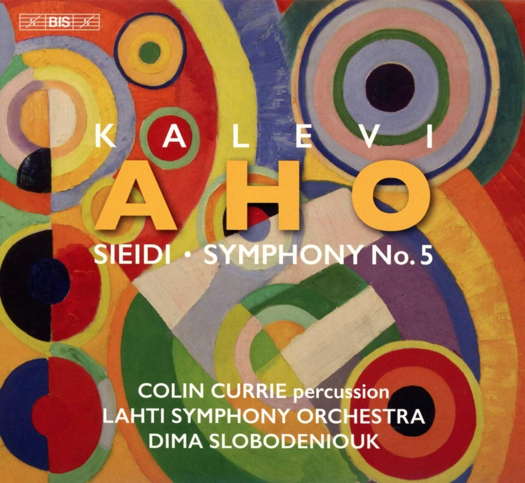ARTICLES BEING VIEWED NOW:
- Régine Crespin
- Hector Berlioz
- Ruth Railton
- Marina Koshetz
- Marián Varga

A Vision of Ambivalence and Incoherence
Music by Kalevi Aho, heard by GERALD FENECH
'... it makes huge demands on the listener ...'
Kalevi Aho, one of Finland's most important contemporary composers, was born in Forssa, Southern Finland, on 9 March 1949. At ten he started studying the violin in his home town. It was also about this time that he commenced trying his hand at composition. In 1968 he continued with his studies at the Sibelius Academy in Helsinki, his teacher being none other than the renowned Einojuhani Rautavaara. Graduating as a composer in 1971, Aho went to Berlin to further his musical training with Boris Blacher.
From 1974 till 1988 he was a lecturer in musicology at Helsinki University and from 1988 until 1993 he was a professor of composition at the Sibelius Academy. Since 1993 he has worked as a freelance composer in the Finnish capital. Aho's principal objective is to create large-scale orchestral, chamber and vocal works, and to date his output includes five operas, seventeen symphonies, thirty-two concertos and several other orchestral and vocal pieces, not to mention a large amount of other music for chamber ensembles and solo instruments.
At present he is the composer laureate of the Lahti Symphony Orchestra. Aho composed his Fifth Symphony in 1975-76, and in his own words, it is a vision of the ambivalence and incoherence of our existence. There is nothing in our world and lives that is entirely complete – joy may be mingled with sorrow, love with anger, grief with comicality etc ... People's mutual interests are often in conflict, and relationships between nations are full of contradictions, often resulting in wars.
Listen — Kalevi Aho: Beginning (Symphony No 5)
(track 9, 0:01-1:00) © 2020 BIS Records AB :
Aho expresses all this in music by constantly letting various musical events overlap, sometimes without there being any connection between them. Often, one of the simultaneous musical events becomes more dominant than the others, only to cede its primacy a moment later when another idea comes to the fore. The symphony is punctuated by big climaxes, especially towards the end when the music becomes more massive and chaotic. Two conductors are required to perform this breakthrough work, as at several points the orchestra is divided into two parts, with one half playing a different tempo from the other, or with one orchestral group starting to get faster stepwise until it is twice as fast, while the other remains at the same tempo, until the underlying pulses of the two orchestral groups converge.
Listen — Kalevi Aho: Poco meno mosso (Symphony No 5)
(track 11, 5:40-6:34) © 2020 BIS Records AB :
The Fifth Symphony was premiered on 19 April 1977 in Helsinki and the Finnish Radio Symphony Orchestra was conducted by Okko Kamu.
Composed in 2010, Sieidi is one of Aho's most performed works. Dedicated to Colin Currie, who has recorded it here, this unique concerto's name is derived from the Sami language. It is used in reference to the rituals and shamanism of tribal peoples the world over. The solo part, which makes use of nine different percussion instruments, begins and ends with the djembe and darabuka, drums usually associated with African and Arab music.
Listen — Kalevi Aho: Beginning (Sieidi)
(track 1, 0:02-0:58) © 2020 BIS Records AB :
The instruments are placed in a row towards the front of the stage and, as the work progresses, the soloist makes his way across the platform, reinforcing the dimension of the piece. From the above descriptions, one can easily deduce that this is no easy music. Indeed, it makes huge demands on the listener, so do approach with caution, more so if you are not an apostle of the post-modern.
Listen — Kalevi Aho: Andante (Sieidi)
(track 5, 0:02-1:02) © 2020 BIS Records AB :
Sound, notes and presentation are top notch.
Copyright © 17 November 2020
Gerald Fenech,
Gzira, Malta

CD INFORMATION - KALEVI AHO: SIEIDI; SYMPHONY NO 5



